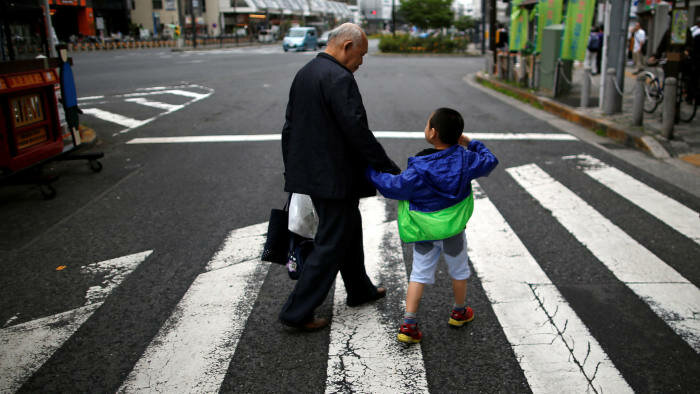Iran facing population decline; is it possible to reverse the trend?

TEHRAN – Many demographers believe that Iran’s population has started to decline more sharply, one point to consider, however, is that Iran’s population growth rate is similar to today’s world average but substantially lower than its peak a few decades earlier.
The country’s population reached up to 80 million, while its growth rate declined to 1.2 percent a year. Censuses in 1350s-1360s (1971-1991), showed that population grew from 34 million to nearly 50 million, corresponding to an average annual growth rate of 3.9 percent (3.2 percent from births and 0.7 percent from net migration).
Iran experienced the highest population growth rate over a 5-year period between 1980 and 1985, when the population grew by nearly 4 percent per year.
Decade later, however, in the Iranian calendar year 1374 (March 1996- March 1997), the results of census showed a rapid decline in the population growth rate due to fertility decline, which dropped from 6.2 births per woman to 2.5 births per woman, over a decade.
According to the data released by the National Organization for Civil Registration, comparing past three years, some 1,366,509 infants were born in the country, whose births were registered last year, while 1,487,913 births occurred a year before it, and 1,528,053 births have been recorded in the Iranian calendar year 1395 (March 2016- March 2017), a difference of roughly 100,000 per year.
Factors affecting birth rate in the country
Ali Akbar Mahzoon, head of population and immigrant statistics at the Statistical Centre of Iran said that the latest Iranian census conducted in 2016 put Iran’s population at 79,926,270 with a male to female ratio of 1.027.
“The annual number of births was fluctuating around 1.4 million before 1370s (1991-2001), which increased sharply to about 2.5 million in late 1370s, however, over the past few years, the number is again estimated at 1.5 million births per year,” he added.
Several socioeconomic factors led to fertility rate decrease and reproductive behavior in the country, including urbanization, education, financial issues, first marriage age, as well as increased access to family planning services along with increased time gap between the first born and marriage.
Between the Iranian calendar years of 1376 (March 1996-March 1997) to 1395 (March 2016- March 2017), the average age at first marriage for females increased from 19.8 to 23.0 and for males increased from 23.6 to 27.4.
Mohammad Baqer Abbasi, an official with National Organization for Civil Registration said in July 2018 that in the Iranian calendar year 1396 (March 2017-March 2018), some 146,000 babies were born a year or less after their parents' marriage, which constitute 10 percent. While some 18 percent of births occurred up to two years after the date of the marriage.
Iran’s elderly population growth
Reduction in the fertility level results not only in a slower pace of population growth but also in an older population.
Higher life expectancy has also contributed to the country’s population growth and survival rates of older age groups, as life expectancy at birth for males was 51 years reported 50 years ago which increased to 75 years in the Iranian calendar year 1394 (March 2015- March 2016), while that of females raise from 51 to 77 years.
Average life expectancy at birth increases largely due to rapid declines in infant and child mortality; since 50 years ago, the mortality rate for children aging 5 or younger, dropped from 188 to 17 deaths per 1,000 live births.
The age dependency ratio, which is the proportion of children (younger than 15) and elderly (65 and older) to the working age population (15 to 65), experienced a drop from 0.95 in 1370s to 0.45 in 1390s,” Mahzoon noted.
In June 2018, Anoushirvan Mohseni-Bandpey, the then caretaker of cooperatives, labor and welfare ministry, said that some 7.3 million people in Iran are ageing, 3.7 million of them are women and 3.6 million are men.
Also, First Vice-President Es’haq Jahangiri said that the population of senior citizens standing at 7.3 million in Iran is projected to increase to 30 million by 2050.
Iran’s population growth rate to decline dramatically
Elsewhere in his remarks, Mahzoon said that declining trend of the whole population growth rate raises the question of whether this trend can reach zero or negative levels; demographic answer to this question is positive.
“The astonishing fertility decline in Iran began around the Iranian calendar year 1363 (March 1984- March 1985) four years before the inauguration of the national family planning program by the government, counseling and services were provided to rural couples through the country’s rural health networks,” he explained.
“When, the desire for smaller family size was on the rise and therefore the program enjoyed a high level of social acceptance. In all, the level and speed of the fertility decline went far beyond the government's original conservative targets.”
In 2016, there were 24.2 million households in Iran with an average size of 3.3 persons; almost two persons smaller than 5.1 persons reported in 1360s (1981-1991), Mahzoon stated.
The overall statistics have shown that growth rate is declining, and even a negative growth trend is tending to happen, he said, adding that international sources also claim that negative trend of population growth will happen in Iran.
Iran must seize the opportunity
“Iran currently achieved a demographic window of opportunity which must be seized now before its working-age population starts to shrink and get older in 2050s,” Mahzoon stated.
Seizing the opportunity, can potentially serve as economic, social, and cultural development which can subsequently lead to motives needed to have larger families and greater working population. Although, the rapidly expanding population has been linked to issues including, unemployment, poverty, water scarcity, undernourishment, urban pollution, and the soaring domestic use of energy.
Iran can grasp the opportunity primarily by taking the most out of its human capital and economy for creating new employment possibilities and economic growth.
FB/MQ/MG
